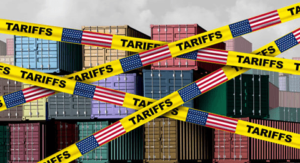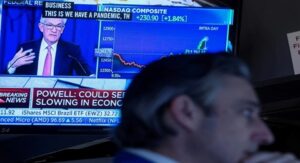
First 25 Years of Euro
The first 25 years of Euro mark a milestone in the ongoing saga of Europe’s ambitious monetary experiment. Launched in January 1999 amidst skepticism and bold visions of stability, the euro has defied early predictions of collapse, demonstrating resilience through critical challenges.
The euro’s journey, however, unveils a mixed record as it succeeded in maintaining price stability but fell short in boosting Europe’s growth and fostering full economic and political integration. The incomplete architecture of the eurozone, evident in its fiscal and economic frameworks, has been a major factor in this paradox.
As Europe stands at the threshold of its next phase, visionary leaders are called upon to navigate the euro towards further evolution and strengthen European sovereignty.
Table of Contents
First 25 Years of Euro
As the euro commemorates its 25th anniversary, marking the first 25 years of Euro, it prompts reflection on a groundbreaking experiment in modern monetary history. Introduced in 1999 amid skepticism, the euro has demonstrated resilience through diverse challenges, showcasing its endurance.
Yet, the journey unveils a mixed record, exposing inherent flaws in the European economic union’s architecture. The milestone marks a critical juncture, inviting examination of the euro’s complex trajectory, highlighting both successes and shortcomings in shaping the economic aspects of participating nations.
This article delves into the past 25 years, highlighting key phases, challenges, and lessons learned.
1. The 2% Decade: 1999-2008
During the “2% decade,” the euro exhibited economic stability with consistent growth, controlled inflation, and manageable budget deficits. Despite this, internal imbalances emerged, concealed by nominal convergence. Loose fiscal and monetary policies impeded necessary structural reforms, causing capital to flow from affluent to less prosperous members, exacerbating economic disparities.
The first 25 years of Euro witnessed the era of the Great Moderation, marked by stability, unwittingly sowing the seeds of challenges that would manifest in subsequent phases, revealing the underlying fragilities in the Eurozone’s economic framework.
2. The 2008 Global Financial Crisis and Fallout
The 2008 global financial crisis exposed the eurozone’s vulnerability, unveiling Greece’s deceptive budget practices. Trust among member states diminished, prompting a shift toward emphasizing individual responsibility and moral hazard. In the face of these challenges, the first 25 years of Euro were marked by unprecedented economic turmoil.
In response, coordinated actions emerged, leading to the creation of the European Stability Mechanism and banking union. These measures played a significat role in rescuing the euro from potential collapse, marking a transformative juncture for the currency and the region’s economic stability. The subsequent years also brought forth new economic challenges that tested the resilience of the eurozone.
3. The Draghi Pledge and Fragmented Structures
In 2012, ECB President Mario Draghi’s vow to do “whatever it takes” saved the euro during the first 25 years of its existence, underscoring the centrality of monetary policy. Despite this success, the eurozone’s economic and financial systems stayed disjointed, exposing the incomplete nature of its institutional framework.
Draghi’s decisive action underscored the need for broader structural reforms to fortify the eurozone against future crises, emphasizing the persistent challenges in achieving a more unified and resilient economic union.
4. The COVID-19 Crisis and Collective Leadership
During the first 25 years of Euro and amidst the COVID-19 crisis, EU leaders, notably Emmanuel Macron and Angela Merkel, showcased collective leadership by suspending fiscal rules, initiating robust recovery programs, and implementing the ECB’s Pandemic Emergency Purchase Program.
These measures, aimed at reassuring markets, successfully spurred economic recovery. However, challenges persisted, highlighting the ongoing complexities faced by the EU despite the commendable response to the crisis.
5. Incomplete Institutional Framework and Lessons Learned
The initial quarter-century of the euro, encompassing the first 25 years of its existence, has highlighted two important lessons. Firstly, the monetary union’s incomplete institutional framework has posed significant costs and risks. To ensure stability and enhance the euro’s global standing, urgent measures include finalizing the banking union, creating a common resolution fund, and advancing the capital market union.
Striking a delicate balance between risk sharing and risk reduction emerges as crucial for the euro’s sustained resilience and success in the international arena. Addressing these imperatives becomes paramount for fortifying the eurozone’s economic foundations and securing its position in the global financial scenario.
6. Completing the Euro: Safeguarding the Single Market
The second lesson underscores the imperative of finalizing the euro and addressing the challenges that have emerged during the first 25 years of Euro, to protect and advance the EU’s pinnacle accomplishment—the single market. Menacing this achievement are national industrial policies backed by state aid, jeopardizing the core principles of the single-market endeavor.
To counteract such threats, the EU must forge a unified European industrial policy, centering on transnational investments and tackling the complexities arising from the digital and green transitions. This strategic approach aims to fortify the EU’s economic foundation, ensuring resilience in the face of evolving global dynamics, securing the longevity of the single market’s success, and unlocking new business opportunities.
Bottom Line
As the euro marks the first 25 years of its existence, it faces a crucial moment. The unfulfilled economic union, revealed in different stages, requires visionary leadership for its evolution. Essential for the ongoing success of the European project is the completion of the euro’s institutional structure and the protection of the single market.
Drawing insights from the first 25 years of Euro and past experiences is crucial in charting the course ahead, securing the euro’s position as a symbol of global unity and economic resilience. The celebration of this milestone serves as a reminder of the challenges and opportunities that lie ahead, shaping the future of the Eurozone.





